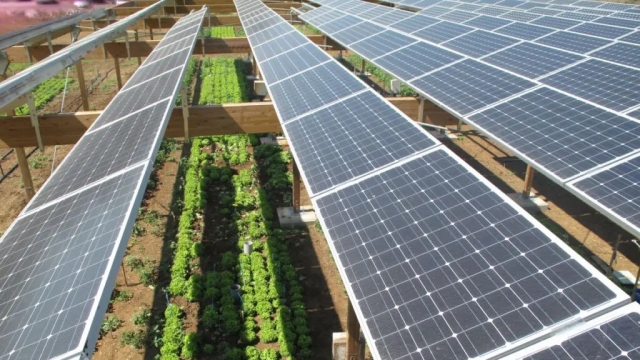
Image: Agrivoltaic farm
Combining food production and energy production: that's the challenge of agrivoltaics. A concept born in Montpellier that has since spread all over the world: installing solar panels on agricultural plots. Christian Dupraz, a senior researcher at INRAE (French National Institute for Agronomical Research) and the President of IUAF, the International Union of Agroforestry is the man behind the idea.
100 gigawatts of photovoltaic energy by 2050 – that's the target announced by the French president in February 2023. "It's a tall order: south-facing roofs, parking lots and brownfield sites won't be enough to meet this ambitious but necessary target," says Christian Dupraz. For the agroforestry researcher, the solution can be summed up in one word: agrivoltaics.
Agrivoltaics means combining photovoltaic panels and agricultural crops on the same plots of land. "The concept was born in Montpellier in 2009, with the world's very first prototype installed in Lavalette," recalls Christian Dupraz, the man behind the project. "When you look at the light output of an agricultural plot, you see that crops only use a third of the sun's rays. The remaining two-thirds, which is not used for agricultural production, can be used to generate photovoltaic energy, so the process makes better use of the sun", explains the crop modeler.
The electricity generated in this way can either be sold back to the grid, or used for self-consumption. "There is growing interest in this technology, especially as photovoltaics has recently become the cheapest form of electricity," points out Christian Dupraz. We have calculated that by equipping less than 2% of France's cultivated area with new-generation agrivoltaic systems, we can produce the electricity equivalent of all our current nuclear power plants, without any reduction in agricultural production". With an agrivoltaic power plant inaugurated every two months in France, the idea is catching on.
Source: University of Montpellier News
Image: Agrivoltaic farm